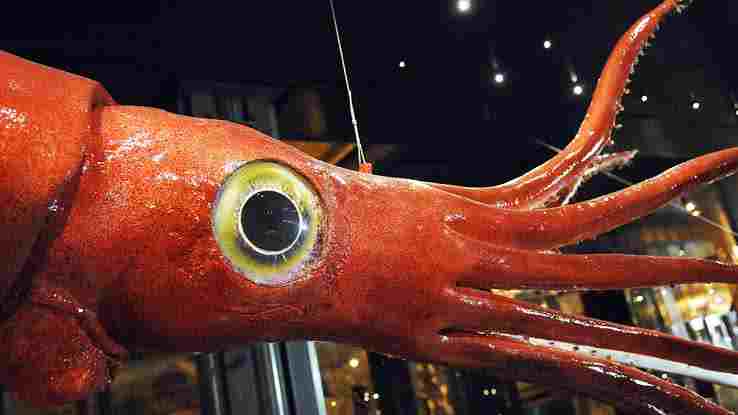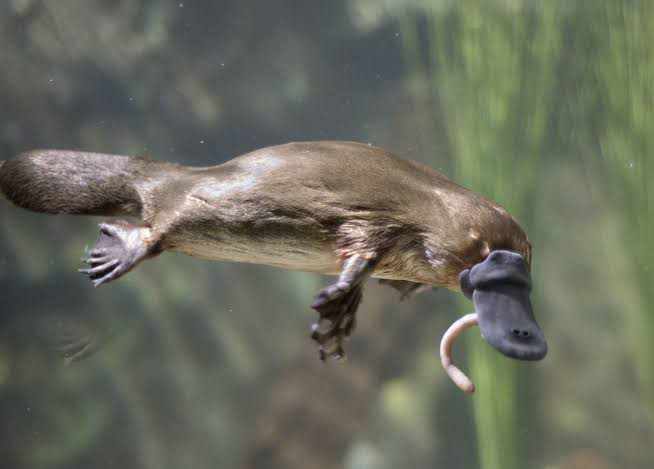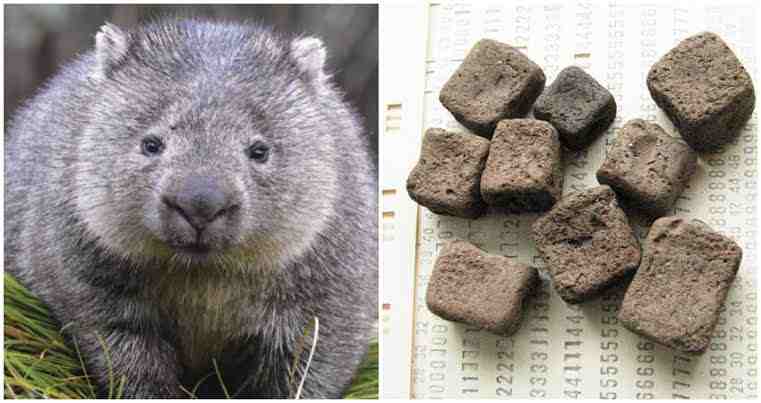Topics in Biology
Cellular respiration in biology Len Academy biology mock questions for waec Len Academy biology midterm questions for SS1, 2nd Term Characteristics of saltwater habitat Aquatic habitat explained with its types Types of habitat: Terrestrial habitat explained with examples What is habitat? Difference between plant cell and animal cell Nucleus explained with its structures Nucleus explained with its types and functions Organelles of the cell explained with their characteristics Eukaryotic cell explained with its characteristics Prokaryotic cell explained with its structure Characteristics of prokaryotic cell Concept of cell Cell theory in biology Importance and limitations of ecological pyramid Protists explained with their characteristics Contents of the scrotum: Epididymis, vas deferens, spermatic cord and cremaster muscle Tropical savanna explained with its characteristicsAcademic Questions in Biology

From the above diagram, which of the organ below isn't a requirement for the male reproductive system?
A. Bladder
B. Ureter
C. Glans Penis
D. Testis
E. Bulbourethral Gland
F. Epididymis
A walnut shaped male accessory sex organ located between the bladder and penis is the _____.
A. Ductus Ejaculatorii
B. Bulbourethral Gland
C. Prostate Gland
D. Ductus Deferens
E. Seminal Vesicles
F. Epididymis
In a food chain, the primary consumers are classified under trophic level _____.
A. Zero
B. One
C. Two
D. Three
E. Four
F. Five
Cold blooded animals are referred to as _____.
A. Homeotherms
B. Endotherms
C. Poilokitherms
D. Ectotherms
E. Thermotherms
F. None of the above
All reptiles are vertebrates.
A. True
B. False
_____ cells are responsible for the formation of osteoblasts.
_____ is a bone that constitute the axial skeleton.
Which of the following is false concerning cartilages and bones?
Biology is a subject for everyone at the secondary level of education. However, students may choose to study biology (or one of its branches) as undergraduates or postgraduates.
Interestingly, biology has numerous amazing facts that comes along with it. Meanwhile, recall that biology is the study of life. In this article, we will look at some amazing facts concerning life.
Please read on the basic characteristics of life here.
Below are some fun facts in biology:
All insects have six legs.
Cockroach is the fastest animal on six legs.
Insects are the only animals without a backbone and can still fly. Every flying animal that isn't an insect must have a backbone.
You have more bones when you were a baby compared to the number of bones you have now. In simple terms, a baby has 300 bones while an adult human has 206 bones.
Please read on bones of the human body here.
The smallest cell in humans is the male sex cell; and that is the sperm. Conversely, the largest cell is the female sex cell termed ovum (ova or egg cell).
Please read on the male reproductive system here.
Dolphins and whales live in water, yet they don’t drink water.
Your thigh bone (called the femur) is stronger than a concrete. It carries the weight of your body whenever you walk.
The human bone marrow produces about 260 billion red blood cells and 135 billion white blood cells daily.
Please read more on the red blood cells and hemoglobin here.
Your red blood cell dies every four months.
The hydra is an animal that never grows old. Some scientists believe it can live forever.
The size of your heart is equal to the size of your fist.
The hard white part of your teeth (called the enamel) is not a living tissue.
Razor blades can be dissolved by the acid in your stomach. This acid is concentrated Hydrochloric Acid (HCl).
Dolphins sleep with one eye open and the other closed.
The male seahorses give birth to their young.
The male honey bee (called drones) exists for only one reason - 'To impregnate the queen'. It dies immediately after a sexual intercourse with the queen.
The bacteria in your body is greater in number than the entire human beings living in the universe.
Starfish is an aquatic animal. It has no head and no brain.
Children see better, hear better and smell better than adults.
Blocking the nostril to prevent sneezing can result in the eyes poping out of its sockets.
The human liver performs over 500 different functions.
The nose and ear never stop growing. The eyes remain the same from birth to death.
If the acid in your stomach is poured over the skin, the skin will be severely damaged. If poured on iron, the iron will be dissolved by it.
Hugging releases the hormone oxytocin which can make people trust you even more.
You can’t sneeze with your eyes open.
Men listen with only the left side of their brains while women listen with both sides.
Please read on the uniqueness of Man here.
Cleaning your ears regularly is dangerous to your health. It is better to leave the ear wax inside of it.
Your body is composed more of liquid than solid.
Please read on homeostasis here.
The human brain is folded in appearance. The smoother it is, the less intelligent a person becomes.
Please read on interesting facts for students here.
The hardest substance in your body is not your bone. It is the enamel and that's the white part of your teeth.
80% of the brain is water.
An ant can lift an object 50 times its own weight.
When a child is born, they have no kneecaps. The kneecaps begin to appear from age 2 – 6.
The average human heart pumps on average about 4,000 gallons of blood daily.
The caterpillar (larva of a butterfly) has more muscles than human beings.
In times of danger, your pupil dilates so you can see more clearly.
The human diaphragm separates the thorax from the abdomen and is very crucial for breathing.
Kindly share this article via the links below:

Please click here to contact Alfred if you require any of the following services:
If you need a standard website at an affordable price.
Online training on the academic subjects: biology, chemistry and basic science.
If you require an advanced smart school management system (web application) for your school.
Click here to read on Len Academy Smart School Software.
Please click here to follow Len Academy on Google News.
Amazing facts in Biology
Russia is home to the largest area of forest in our world with a land mass of 815 million hectares

Giant squid lives deep in the ocean and they have the largest eyes in the world
The movements of the fingers are controlled by muscles of the palms and forehands

Platypus (sometimes referred to as the duck-billed platypus) is an egg-laying, semiaquatic mammal found in eastern Australia. It has no stomach and as such, its food goes from the mouth through the esophagus and directly to their intestines.

Pufferfish contain a toxin called tetrodotoxin. This makes them foul tasting and poisonous to predators. Tetrodotoxin is about 1,200 times more poisonous than cyanide, and there is enough toxin in one pufferfish to kill 30 adult humans. Unfortunately, there isn't any known antidote to this poison.
Interestingly, a delicacy in Japan (called fugu) is made from pufferfish. This meal is very expensive, and must be prepared by trained and licensed chefs. An improper preparation of fugu may lead to the customer's death. Sadly, such deaths are recorded annually

Wombats are the only animal with a cube-shaped poo. They can stack up these cube-shaped poo, marking their territory with it

Robert Wadlow (1918–1940) remains the tallest man ever recorded in the Guinness World Records. He was an American who stood at 8 feet, 11 inches.
An abnormally enlarged pituitary gland had resulted into Robert Wadlow's giant size.
Cockroach is the fastest land animal on six legs

Like humans, all apes laugh when tickled

An ostrich's eye is bigger than its brain
Notable points in Biology

An artery is composed of three layers:
The outermost layer is termed tunica adventitia (or tunica external). It consist mainly of collagen fibres and connective tissues that anchors the arteries to other nearby tissues.
The middle layer is named tunica media. It is made up of smooth muscles and elastic fibres that supports the artery in conveying blood at high pressures.
The inner layer is called tunica intima (or tunica internal). It is lined by a smooth tissue called endothelium, and is made up of a fine network of connective tissues.
All living organisms possess various features in order to survive in their environment. This is the concept of adaptation. As an instance, a fish is able to live in water because it has gills and fins.
Also, a camel is able to survive in the desert because it has large feet to aid walking on sand without sinking. It also has long eyelashes to help protect it from the blowing sand and wind.
Plants are also able to live in different habitats because they have the required adaptive features towards that habitat. For instance:
Plants that live in/on water are termed hydrophytes.
Plants that live on land with moderate amount of water are termed mesophytes.
Plants that live on deserts or arid lands are termed xerophytes.
The point is:
All organisms have various features on them that enables them adapt in their habitat
For a thing to be considered living, it must possess all the basic characteristics of life. These include:
Movement
Respiration
Nutrition
Irritability or Sensitivity
Growth
Excretion
Reproduction
Death
Adaptation
Competition
Please read the explanations on all the basic characteristics of life here
During strenuous exercises like sprinting or running, your body may actually work in the shortage of oxygen. During this time, your body owes oxygen (called oxygen debt) and it must be replenished or repayed after the exercise is stopped. This is why you breathe excess of oxygen after you stopped the exercise.
This is the concept of anaerobic respiration

A food chain is a diagram that shows the relationship between plants and animals within a habitat on the basis of how they rely on each other for food.
Note: Habitat is a place where an organism live. It is of three types: